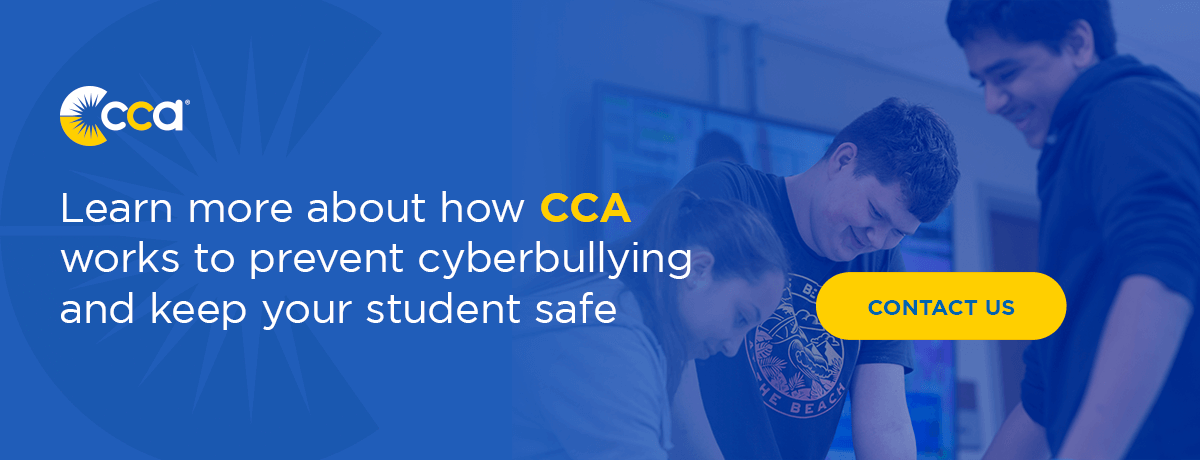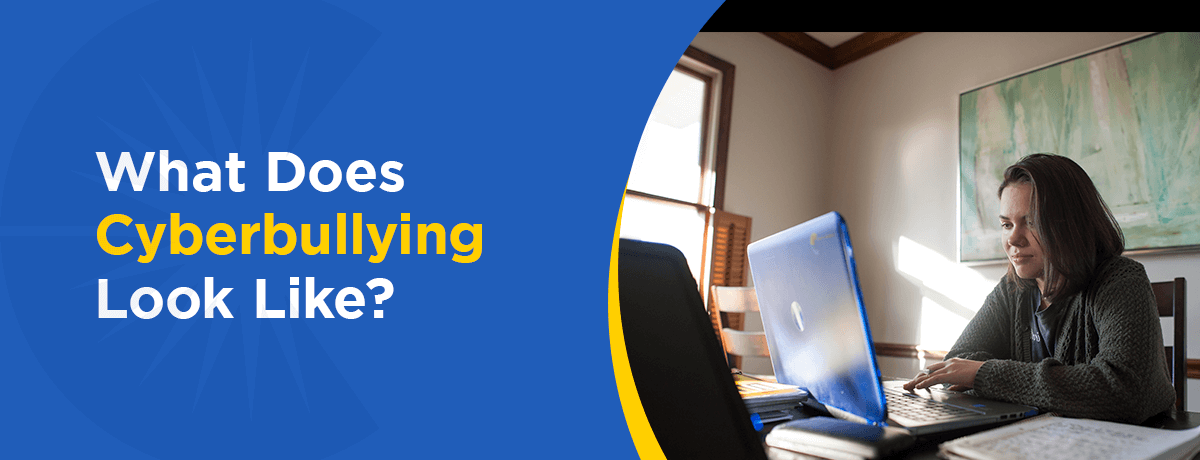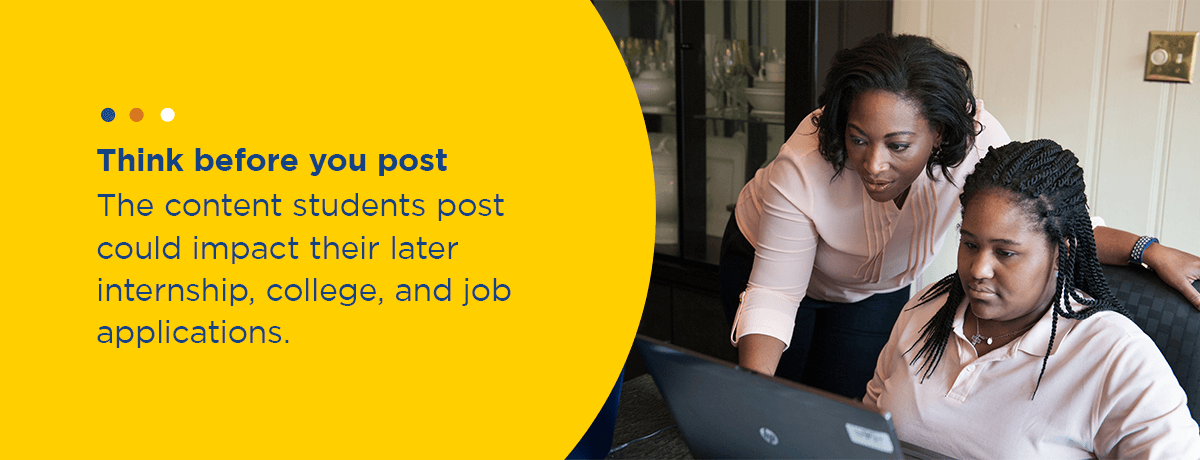We live in a digital world. Everything from entertainment to shopping to employment has begun to shift to the online space. As we continue to embrace technology, we continue to reap the benefits it can offer. However, we must also be aware of the negative sides of technology — and one of the most prevalent negatives is cyberbullying.
Unfortunately, cyberbullying is an issue that a majority of teens have to deal with — 59% of teens have experienced some form of cyberbullying, and 90% of teens believe that cyberbullying is a problem for people their age. Given the prevalence of online bullying, it’s important for parents and guardians to understand what it is, what effects it can have, and how they can best respond.
What Is Cyberbullying?
Cyberbullying is bullying that occurs in the digital space. Devices such as cell phones, computers, and tablets can all be channels for cyberbullying. Specifically, cyberbullying can take place through texting, online forums, social media, gaming, email, and any other avenue for digital communication.
This form of bullying can be more difficult for parents and teachers to recognize. Because it does not occur physically but online, it can be harder to notice. Yet cyberbullying can also be more persistent than physical bullying because students are digitally connected at all hours of the day, rather than simply being around each other during school hours.
What Does Cyberbullying Look Like?
Diving into the specifics of cyberbullying can be challenging, but it’s important to understand exactly what cyberbullying can entail if you want to combat it. While cyberbullying can take a lot of different forms, the most common include:
- Text messages from people your student knows or doesn’t know with mean or hurtful content
- Photos and videos circulated without your student’s permission, intended to embarrass or otherwise harm your student
- Messages sent through social media with threatening, mean, or hateful content
- Rumors spread about your student through digital communication channels such as text, email, or social media
- The creation of a fake social media profile or a fake webpage about your student to harass or humiliate
- Others stealing passwords to log into your student’s accounts and change their information
- “Doxing” your student, which involves releasing private personal details such as an address, phone number, social security number, and more to the public via social media or online forums
- People trying to cut your student off from communicating with others, using methods such as exclusion from group messages or banning from online chat groups
Signs and Effects of Cyberbullying
There are several signs of cyberbullying that parents and guardians should be aware of and keep an eye out for. Kids may not admit to being cyberbullied, but there are a few signs that could clue you in that cyberbullying might be occurring:
- Suddenly avoiding using devices they previously used frequently
- Becoming frustrated, depressed, or angry while or after using their phone or being online
- Pulling away from family and friends
- Exhibiting reluctance toward activities they used to enjoy
- Showing a decline in grades without explanation
- Not wanting to go to school or attend specific classes
- Displaying general signs of depression or sadness
If you see any of these signs in your child’s behavior, you should immediately take action.
Tips for Preventing Cyberbullying
No one wants their students to endure cyberbullying, so it’s important to teach your kids about what they can do to help prevent cyberbullying from occurring. The following tips are a great place to start in cyberbullying prevention:
- Educating yourself and your child: It is easier to prevent and combat cyberbullying when you know what it is. Make sure you and your child understand everything that cyberbullying encompasses and smart ways to prevent it.
- Keeping photos “PG”: Remind your student that every image posted on the internet or sent in digital messaging can be permanent. If your student wouldn’t want a picture to be circulated across social media, they should not post or send that image.
- Logging out of online accounts: If your student accesses a social media account on a public computer and forgets to log out, the next person to use that computer could now have access to their accounts. Logging out of accounts — and keeping passwords private — is a simple yet effective way to ensure your student’s account isn’t compromised.
- Never opening unidentified or unsolicited messages: If your student receives a message via email, text, social media, or any other method from an unidentified sender, simply delete the message right away. Unidentified messages could contain viruses that will infect your device. For the same reasons, make sure your student knows never to click on links sent from someone they don’t know.
- Thinking before you post: Thinking before posting will solve a host of problems. If what your student posts could be used to hurt or harass them later, they should simply not post it. Even beyond cyberbullying, the content students post could impact their later internship, college, and job applications.
- Using privacy controls: Your student can set their social media accounts to varying levels of visibility — setting accounts so only friends can see their posts will help prevent cyberbullying. Similarly, students should make sure they don’t accept friend requests from just anyone but instead that they actually know and trust the people they’re friending.
- Not cyberbullying others: Preventing cyberbullying can start with your student. They might not be currently engaging in cyberbullying, but teaching them to respect others — online and offline — can, in turn, impact other students and help prevent the spread of cyberbullying.
What to Do if Your Child Is Going Through Cyberbullying
If you have noticed some of the signs of cyberbullying and confirmed that your child is being cyberbullied, there are steps you can take to help your child through this difficult time. Some of these steps include:
- Make sure your child is safe and knows that they are safe
- Remind your child not to open any more messages from the online bully or from an unknown sender
- Block communication with the cyberbully
- Take pictures of the messages for evidence, in case you need to involve other parents, teachers, or the authorities
- Tell an authority figure immediately if your child receives a threatening message
You might also take other steps like managing your child’s time online or seeking professional counseling or therapy for your child.
How Cyber Schools Can Prevent Bullying
Traditional schools and cyber schools alike are finding new ways to prevent bullying of all kinds, from physical bullying to cyberbullying. The online learning opportunities afforded by cyber schools such as Commonwealth Charter Academy (CCA) can give students an escape from the traditional school environment, where bullying may still be present.
With cyber schooling, students have a greater ability to choose their social groups, which will likely cut down on both physical and cyberbullying. Similarly, parents of cyber schooling students are able to more closely monitor their kids’ behavior and interactions — if cyberbullying does occur, parents can step in much more quickly.
CCA specifically has many procedures in place to help prevent cyberbullying. We train families and students to use Pennsylvania’s anonymous Safe2SayPA reporting system for voicing their bullying concerns. This information is relayed to CCA administrators, who can then jump into action. We also train our administrators, teachers, and counselors to recognize the red flags of bullying and intervene with the right resources.
To support families who are impacted by cases of cyberbullying, we provide a certified case manager to immediately reach out to the student’s family and connect them with professionals who can provide assistance or other community resources. CCA acts swiftly upon hearing anything regarding cyberbullying. Similarly, we teach our students from a young age that bullying of any form is unacceptable and give them tools for help if they witness or experience cyberbullying.
Learn more about how CCA works to prevent cyberbullying and keep your student safe by contacting us today.





